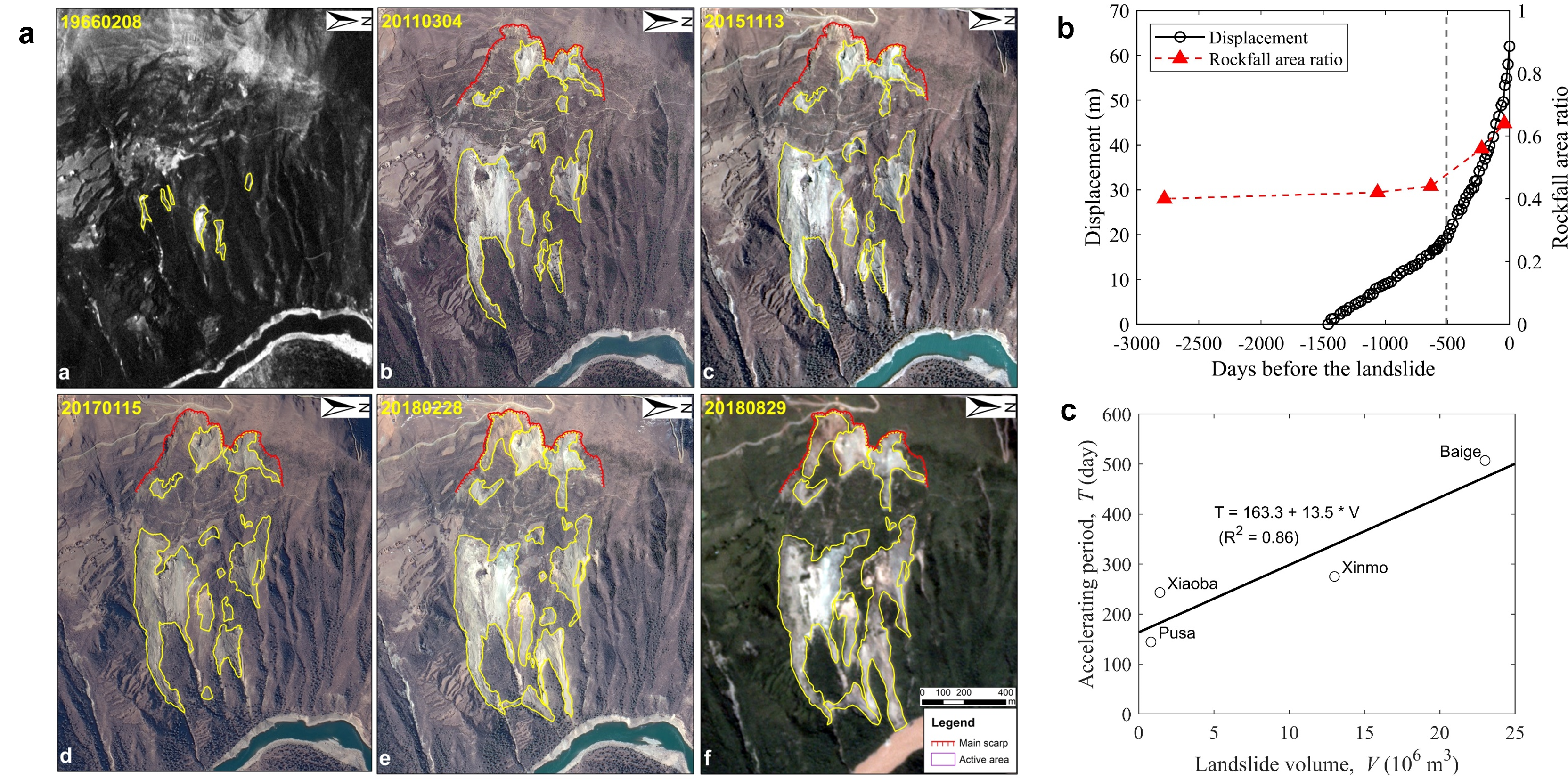Geomorphological Precursors for Landslide Early Detection
1 minute read
Early detection of rockslides at high-elevation and well-vegetated slopes remains challenging. This study used satellite and unmanned aerial vehicle (UAV) optical remote-sensing (ORS) images to track evidence of slope deformation and examine potential geomorphological precursors of five large rockslides in China. All the surveyed landslides had cracks or scarps and rockfalls within the landslide source area before the onset of rapid sliding. These precursors can be identified in ORS images taken several years or decades before the rapid slope failure, which provides sufficient time for the landslide early detection in practice. Local topography affects the spatial locations of cracks or scarps. Rockfalls within the landslide source area tend to locate at “key blocks” where slope mass provides forces resisting sliding. The rockfall area ratio, defined as the accumulated area of rockfalls over the landslide source area, ranged from 0.33 to 0.92 before rapid slope failure. The landslides developed on anti-dip and igneous rock slopes show a more significant rise of rockfall area ratio before the slope failure than the landslides on dip slopes. Given the broad availability of ORS data, this study could shed light on the ORS- based landslide early detection and landslide kinematics study.

